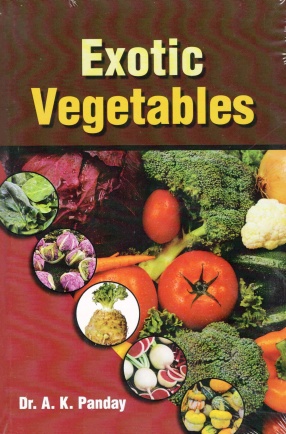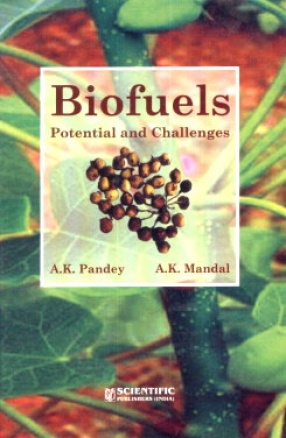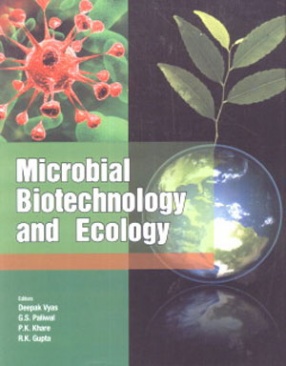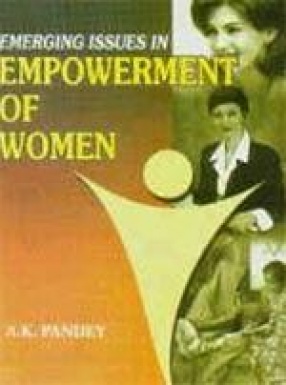
A K Pandey

Showing all 23 books
















This book is the basic book intended as a course supplements to students, researchers, medical officers, and practitioners of Ayurveda.

This book is the basic book intended as a course supplements to students, researchers, medical officers, and practitioners of Ayurveda.



The book Drumstick Moringa Oleifera Lamk covers the valuable information on various aspects of a nutritionally laced and medicinally rich but underutilized plant Moringa. While compiling this book, recent information has been given towards its immense applications in human nutrition, medicinal applications and industrial uses which beckon the attentions of researchers to bring this crop in main stream. Information regarding its rich diversity describing native ...

In recent times serious concerns have been expressed both by developed as well as developing economies of the world over the increase in global warming, ozone layer depletion and number of other environmental problems occurring due to massive carbon footprints left by use of fossil fuels as a result of exponentially amplified demand in transportation and other purposes. The rising and volatile prices of petroleum products compelled entire world to search for new ...

We are living in the ocean of microbes. These tiny microorganisms are responsible for creating atmosphere for the present day life forms. These microorganisms have immense potential to fulfill the need of the human kind. They can provide us food, fuel, fertilizer. They act as a sequesters, remediators, scavengers, and what not. The recent era is the era of biotechnology once we equipped ourself with the modern technology. It is easy to harness the potential of ...

This book covers valuable information on number of aquatic edible greens found across the globe in various submerged places lying in tropical, subtropical and temperate regions. In India, a number of aquatic vegetables viz., water chest nut (Trapa spp.), water spinach (Ipomoea aquatica), lotus (Nelumbo nucifera), and watercress (Nasturtium Aquaticum) are grown sporadically/commercially. Recently, Indian Council of Agricultural Research (ICAR), New Delhi has ...


Empowerment of Women is a much debated issue. Various programs were introduced under different names starting from Community Development (CD) to Integrated Rural Development (IRD) and Area Development. Social Welfare as a plan component has acquired great significance, as evidence by its widening interface with Government and increasing participation by voluntary agencies. From the Fifth Plan onwards, emphasis has been on the promotion of preventive and ...

Starting from descriptive and morphological studies of reproductive organs, the field of plant reproductive biology is advancing rapidly and has entered into an area of experimental, molecular and genetic approaches. As most of the economic products from plant resources are derived through the interplay of sexual reproduction, understanding reproductive processes is a pre-requisite for attempts aimed at optimization and improvement of the yield. Understanding ...

A large number of ethnic group of diverse culture inhabits India, a majority of whom could be found in Bihar - especially Chhotanagpur and Santhal Pargana regions. Santhal Pargana region is inhabited by Santhal and Paharia tribes. Their lifestyle and livelihood revolves around the forest they live in, and derive their needs from the trees and plants in the jungles, the keen knowledge of which has been handed down from father to son since ages. Besides the ability ...

An individual’s self-conception as being male or female, as distinguished from actual biological sex. For most persons, gender identity and biological characteristics are the same. There are, however, circumstances in which an individual experiences little or no connection between sex and gender, in trans-sexualism, for example, biological sexual characteristics are distinct and unambiguous, but the affected person believes that he or she is—or ought to ...

A lot has been written and is also being written on rural development. People’s participation, basic minimum needs and target-groups oriented approaches to development and other related topics. All of them suggest that a broad consensus has been emerging on what went wrong in the past in the matter of planning and what new approaches should be adopted in the future to bring about distributive justice. The present book aims to address in a very direct way the ...

The essential principles and practices of modern public administration are presented in a lucid and cogent manner in the present publication that seeks to assist the student and researcher, the practicing administrator and the aspiring candidate, with a realistic, discursive and insightful view of the subject. The subjects covered are vital and structural as well as conceptual. They include: historical background, concepts of organization, concept of power, ...

Biodiversity is rightly considered as an index of sound health of habitat and strong base for better evolution. It entails all forms of biological entities inhabiting the earth--including prokaryotes and euckaryotes. Man has always been fascinated by the biological diversity and has exploited it enormously for his own needs. In this venture, he has not only destroyed the natural biodiversity but has also enhanced the chances of health and environmental problems. ...

The anxiety of man to explore nature and discover new forms and aspects of life has led to a vast heritage of knowledge and ideas. The diversity of microbial flora and their role in molding the ecology has always raised a number of queries in the human mind. The microorganisms have posed influence in the social and economic structure of human civilization from time immortal. The influences have been beneficial as well as detrimental. These effects points out the ...

Fishes are the most abundant and yet least known class of vertebrates. They inhabit every kind of aquatic environment and their wide distribution has resulted in many different designs for their special order of life. The present literature reviews what is known about the fishes. It gives a comprehensive account of the Fishery Science and also offers diverse information through step by step procedures. It covers all basic information on the subject of fisheries ...

Like his primate relatives, Man was also originated and grown up in natural surroundings. From other animals he was different only with his better intelligence and that has created the havoc. Using his intelligence he was able to select better edible plants, better hunting equipments, improving the comfort in natural shelters like caves and was also trying to recognise the properties of different plants to get relief from the physical discomforts they were ...

Of the 2 lac 70 thousand plant species, about 3000 have been used as food. Of these, only 200 species have been domesticated and are cultivated for food. Just, 30 species are considered important food crops and are responsible for 95 per cent of human nutrition. With a wide range of climatic conditions from the Torrid to the Arctic, India possesses a good genetic wealth of domesticated crops and out of 20,000 angiosperm plants, 600 plant species constitute the ...

Aquaculture contributes to over 70% of Inland fish production placing India to second rank in the world aquaculture produce marking the era for Blue Revolution. Seed availability is the primary requirement of any aquaculture programme. Due to spread of fish and shellfish aquaculture in this country, the demand for seed by aquafarmers has been increased tremendously during the last two decades and there is a need to evolve cheap and reliable technique for ...
